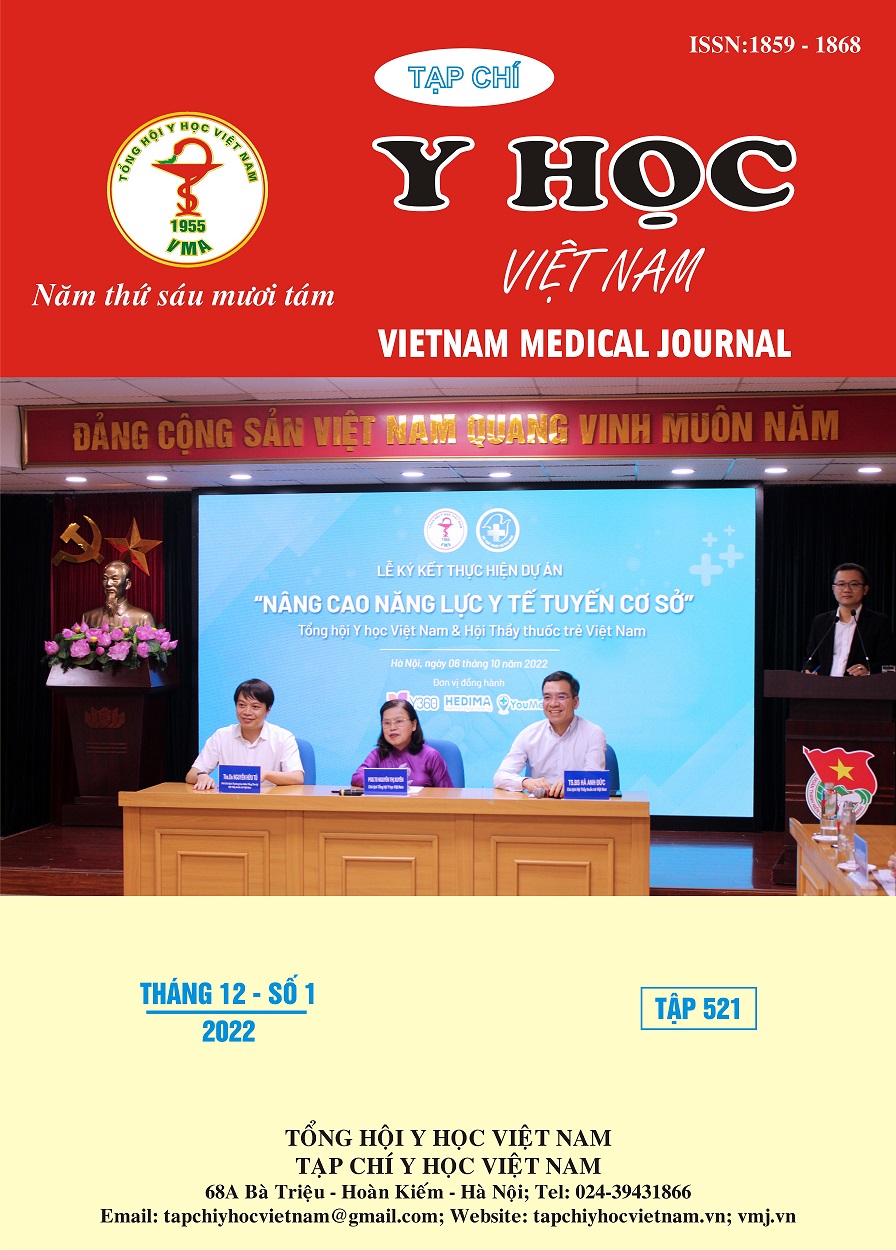EFFECTIVENESS OF TRANSCRANIAL DIRECT CURRENT STIMULATION IN INPATIENT PATIENTS
Main Article Content
Abstract
Background: Transcranial direct current stimulation (tDCS) is a noninvasive neuromodulation and stimulation technique indicated in many psychiatric disorders. Objectives: To evaluate the effectiveness of transcranial direct current stimulation therapy in inpatient depression patients. Method: an observational, prospective, comparative study, including 56 patients diagnosed with depression according to ICD-10 diagnostic criteria (1992), inpatient treatment at The Mental Health Department of the National Geriatric Hospital from August 2021-May 2022 and was divided into two groups: the intervention group with a combination of drugs and tDCS (n=28) and the control group using the drug alone (n=28). Clinical assessment and Beck test (BDI), Montgomery-Asberg depression scale (MADRS) were examined in baseline, after 1 week, after 2 week. Results: The response/remission rates of the combination treatment group and the control group after 1 week were 46.4%/17.9% and 7.1%/0%, respectively, after 2 weeks was 71.4%/57.1% and 35.7%/28.6%. The difference between the two groups was statistically significant (p<0.05). Conclusion: The tDCS combination group had better improvement than the control group as reflected in the higher response rate and remission rate.
Article Details
Keywords
depression, transcranial direct current stimulation (tDCS), effectiveness
References
2. Smith K. Mental health: a world of depression. Nature. Nov 13 2014. 515(7526):181. doi:10.1038/515180a.
3. Kessler RC, Bromet EJ. The epidemiology of depression across cultures. Annual review of public health. 2013. 34:119-138. doi:10.1146/annurev-publhealth-031912-114409.
4. Van de Velde S, Bracke P, Levecque K. Gender differences in depression in 23 European countries. Cross-national variation in the gender gap in depression. Social science & medicine (1982). 07/01 2010. 71:305-313. doi:10.1016/j.socscimed.2010.03.035.
5. Salehinejad MA, Ghanavai E, Rostami R, Nejati V. Cognitive control dysfunction in emotion dysregulation and psychopathology of major depression (MD): Evidence from transcranial brain stimulation of the dorsolateral prefrontal cortex (DLPFC). Journal of affective disorders. 2017/03/01/ 2017. 210:241-248. doi:https://doi.org/10.1016/j.jad.2016.12.036.
6. Brunoni AR, Valiengo L, Baccaro A, et al. The Sertraline vs Electrical Current Therapy for Treating Depression Clinical Study: Results From a Factorial, Randomized, Controlled Trial. JAMA psychiatry. 2013. 70(4):383-391. doi:10.1001/ 2013.jamapsychiatry.32 %J JAMA Psychiatry.
7. Bareš M, Brunovsky M, Stopkova P, Hejzlar M, Novak T. Transcranial Direct-Current Stimulation (tDCS) Versus Venlafaxine ER In The Treatment Of Depression: A Randomized, Double-Blind, Single-Center Study With Open-Label, Follow-Up. Neuropsychiatric Disease and Treatment. 10/01 2019. Volume 15:3003-3014. doi:10.2147/NDT.S226577.
8. Brunoni AR, Moffa AH, Sampaio-Junior B, et al. Trial of Electrical Direct-Current Therapy versus Escitalopram for Depression. New England Journal of Medicine. 2017/06/29 2017. 376(26): 2523-2533. doi:10.1056/NEJMoa1612999.
9. Razza LB, Palumbo P, Moffa AH, et al. A systematic review and meta-analysis on the effects of transcranial direct current stimulation in depressive episodes. 2020. 37(7):594-608. doi:https://doi.org/10.1002/da.23004.


